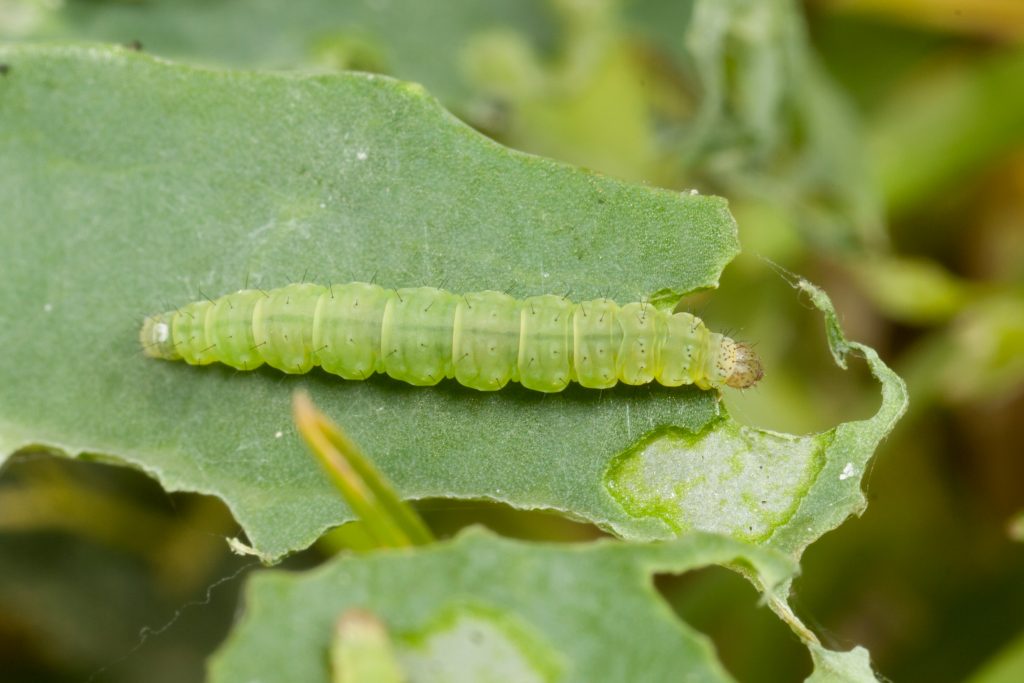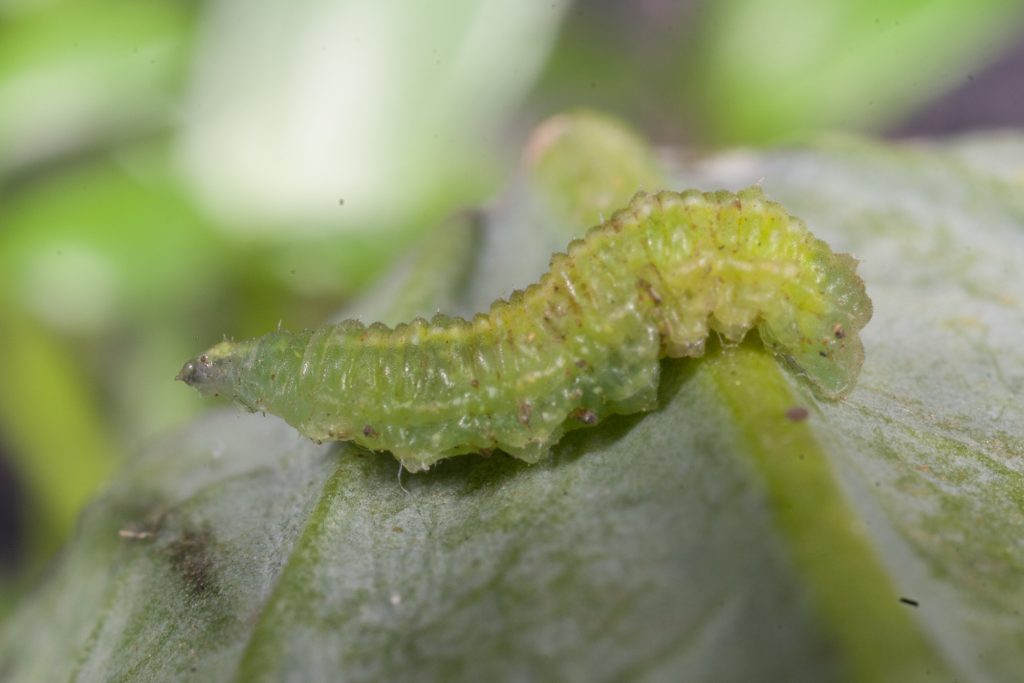Monitor diamondback moth activity in canola crops as numbers can build up rapidly during spring.
Diamondback moth (Plutella xylostella, DBM) is an all-year-round pest, but it most abundant in canola crops during spring and early summer.
While this pest is named after its most distinguishing feature as an adult – the white uneven stripe down the centre of its back that forms a ‘diamond’ pattern on its wings at rest – it is the immature, larvae that damage crops.
Young DBM larvae create ‘windows’ and small holes in canola leaves, often feeding mostly on the underside of the leaves. Older DBM larvae can also graze on stems and pods.
Adult DBM is a relatively small moth (10 mm in length), and its activity in crops can be effectively monitored with pheromone traps.
In one canola paddock in the Victorian Mallee, pheromone traps have caught between 30–60 DBM adults per week since mid-August.
Knowing the status of DBM activity in canola crops is useful intelligence as female DBM can lay more than 100 eggs in their lifetime!
Identification of larvae
Diamondback moth larvae are pale yellowish-green in colour, can grow up to 10 mm in length, and have a body shape that is slightly tapered at each end.
They are sometimes mistaken for beneficial hoverfly larvae, which are also abundant in spring, playing an important role in keep aphid populations in check.
One sure way to distinguish the two is looking for the presence of legs. Hoverfly larvae are legless, while DBM larvae have three pairs of true legs close to their head and four sets of prolegs on their abdomen.
When DBM larvae are disturbed, they wriggle and often drop from plants by a silken thread.

Photo by Andrew Weeks, Cesar Australia 
Photo by Andrew Weeks, Cesar Australia
Management considerations
Canola crops should be monitored from now until windrowing/harvest.
Search for the presence of larvae on leaves, buds and flowers, especially during flowering and podding. Sample crops by sweep netting.
Take a minimum of 5 sets of 10 sweeps in several parts of the crop and calculate the average number of the larvae per 10 sweeps.
If no diamondback moth is detected, the crop should be monitored again in a fortnight.
National thresholds to guide spraying decision are: >10 larvae per 10 sweeps for pre-early flowering, >50 larvae per 10 sweeps for early-mid flowering through to pod formation, and >100 larvae per 10 sweeps for late flowering through to podding.
If spraying is warranted, remember that DBM can evolve resistance readily and many populations are difficult to control with insecticides. We strongly encourage growers and advisors to follow the Resistance management strategy for DBM in canola.
Some key recommendation from the resistance management strategy are:
- Where possible, avoid the use of pyrethroids and organophosphates for control of spring pests, and instead use target-specific ‘soft chemicals’;
- Do not re-spray a crop in the same season where a known spray failure has occurred using the same product or another product from the same insecticide group, or if a spray failure has occurred where the cause has not been identified;
- If respraying is necessary, avoid using a chemical in the same group, in the same season;
- Ensure spray rigs are properly calibrated and sprays achieve good coverage, particularly in crops with a bulky canopy.
Don’t forget to factor in status of natural enemies in your crop in decision making. Small parasitic wasps (Diadegma semiclausum, Apanteles ippeus and Diadromus collaris) play an important role in DBM control, as well as brown lacewings, spiders, and damsel bugs.
Weather conditions can also dramatically affect populations. Greater than 5-8 mm of rain in 24 hours can reduce DBM larvae numbers as they are dislodged, drowned or killed by disease.
Acknowledgements
Field report
Brad Bennett – AGRIvision (Mallee, VIC)
Cover image: Photo by Andrew Weeks, Cesar Australia





